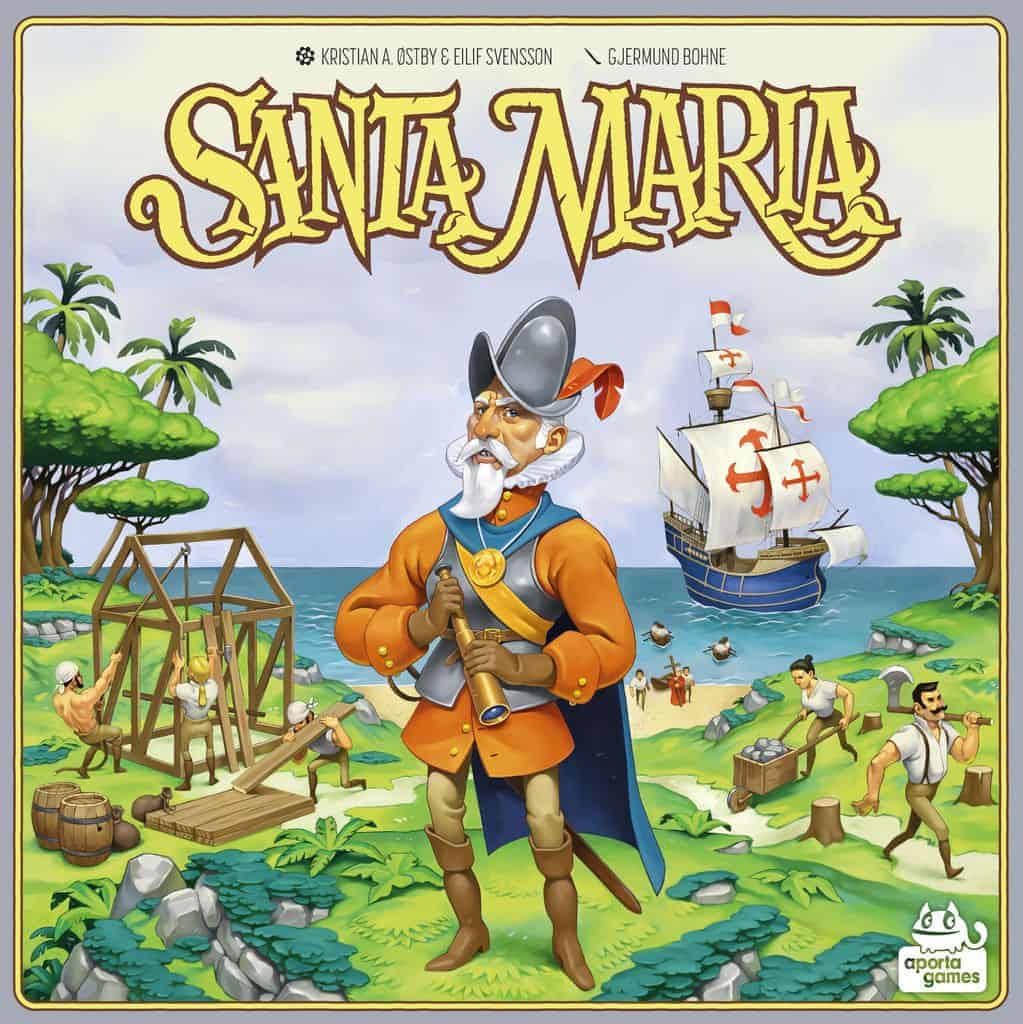Quinns: There’s quite a bit of buzz around Santa Maria. “Buzz!” spake this box as it arrived in my flat like a gentle but hefty bumblebee, excited to alight on my table.
Paul: OH GOD WHERE’S THE SPRAY QUICK OPEN A WINDO-
Quinns: It’s fiiiine Paul! This is something we can safely let into our homes to flit happily about, to land on our tables or to watch us from the shelves with its compound eyes. Santa Maria is quite harmless!
Paul: Harmless and… perhaps toothless?
Popping open the almost cartoonishly cute box, which appears to depict Santa Claus as armoured as he is jolly, we’ve got dice! We’ve got charming wooden tokens! We’ve got wonky jungle tiles! We’ve got… is this the terrifying face of an inflated baby, about to burst?!


